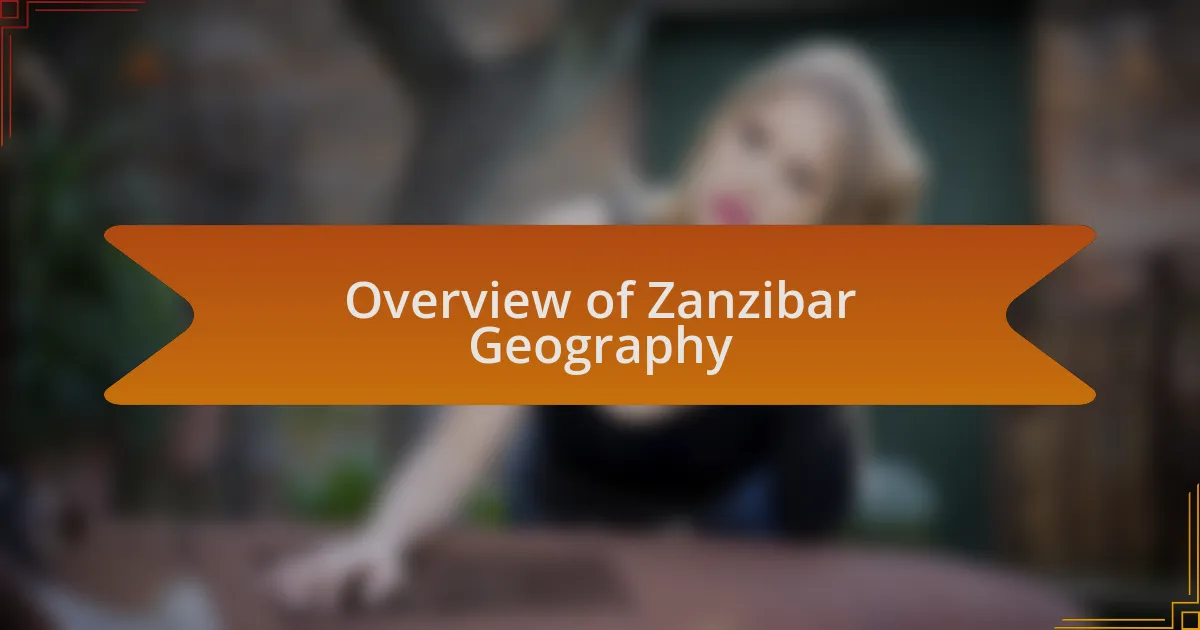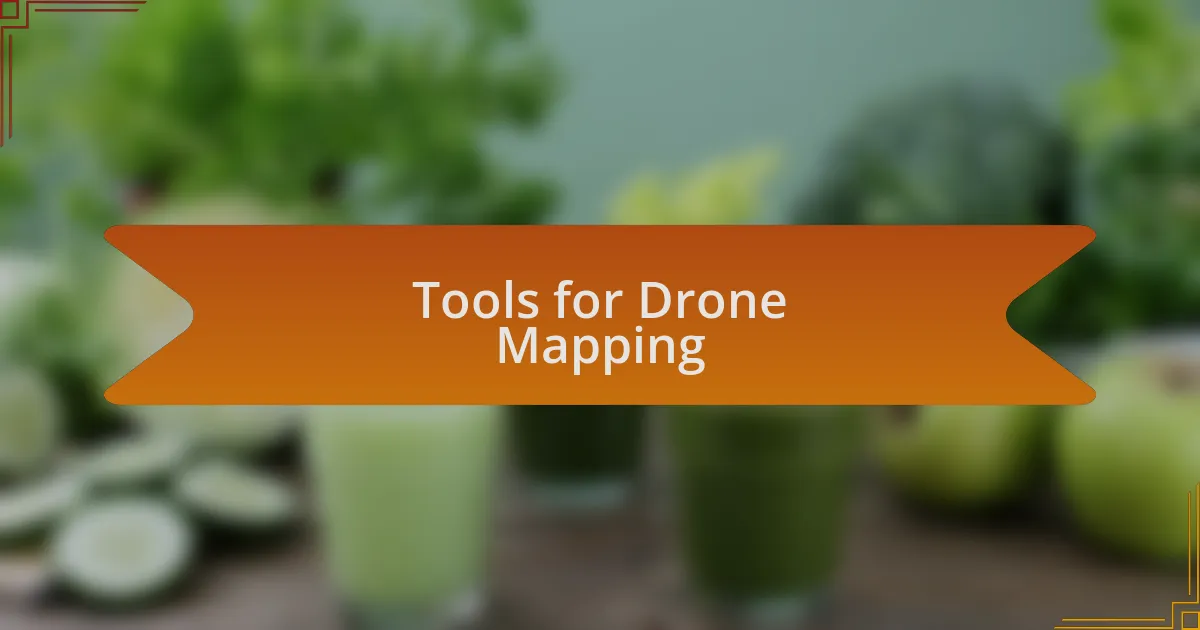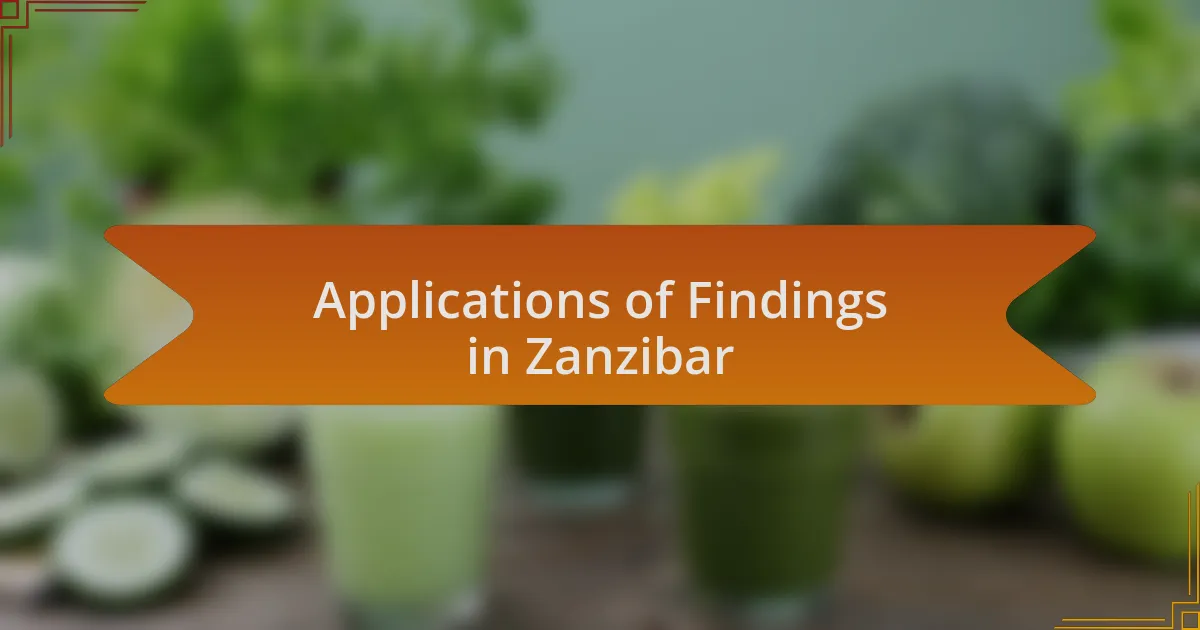Key takeaways:
- Drone mapping enhances our understanding of the environment by revealing complex relationships and patterns, aiding in conservation and urban planning.
- Layered maps foster collaboration among stakeholders, allowing for shared insights and more effective decision-making regarding land use and resources.
- In Zanzibar, effective map layering conveys both ecological and cultural narratives, facilitating community engagement and inspiring local stewardship of the environment.
- The application of drone mapping data has tangible impacts on policy, as demonstrated by improved regulations and sustainable practices in local fishing initiatives.

Introduction to Drone Mapping
Drone mapping has revolutionized the way we view and interact with our environment. The ability to capture high-resolution images and create detailed maps is simply astounding. Have you ever looked at an aerial image and realized just how much information is packed into that single shot?
When I first encountered drone mapping, I was taken aback by its precision and versatility. It felt like I was holding a new lens to the world, one that revealed hidden features of familiar landscapes, especially in places like Zanzibar. This transformative technology allows us to not just see the land but to understand it in ways we hadn’t imagined before.
The data collected through drone mapping is more than just pretty pictures; it’s about revealing patterns and relationships within the environment. Each layer of information adds depth to our understanding, and I find it fascinating to consider how this technology can aid in conservation and urban planning. Isn’t it exciting to think about the potential for drones to guide our future decisions?

Benefits of Map Layering
When I dive into map layering, I immediately recognize its incredible ability to enhance decision-making. Imagine layering various data—like vegetation, water sources, and human infrastructure—over a single aerial image. Each layer tells a different story, and together they create a comprehensive view that helps in analyzing land use effectively. That’s how I discovered the rich tapestry of Zanzibar’s environment, visually connecting the dots between its natural resources and urban development.
One of the most thrilling aspects of map layering is how it fosters collaboration among different stakeholders. Whether it’s local communities, conservationists, or urban planners, everyone benefits from a shared visual understanding. I recall working on a project where community input significantly shaped conservation strategies; the layered maps helped us visualize areas needing urgent attention while also highlighting community resources. How often do you find tools that not only inform but also inspire collective action?
Lastly, the simplicity of gaining insights from complex data through map layering cannot be overstated. For instance, when I overlayed climate data with land usage patterns, the patterns of potential flooding risks emerged clearly. This kind of analysis makes it feel like you’re holding a solution in your hands, ready to address real-world issues—something I’ve come to appreciate entirely through my journey with drone mapping. Isn’t it remarkable how these layers have the power to transform raw data into actionable insights?

Overview of Zanzibar Geography
Zanzibar, an archipelago off the coast of Tanzania, boasts a diverse geography characterized by its stunning coastlines and lush interior landscapes. The island’s northern parts are dotted with coral reefs, while the central region features fertile lands ideal for agriculture. I remember the first time I flew my drone over the rugged cliffs and pristine beaches; it struck me just how varied the terrain was in such a compact area.
The geographic layout of Zanzibar also greatly influences its climate and ecosystems. With a tropical climate, the island experiences distinct wet and dry seasons that shape both natural growth and human activities. I’ve noted this firsthand while observing how farmers adapt their practices based on these seasonal changes—an experience that deepened my respect for the land and its rhythm.
Furthermore, the interplay between land and sea around Zanzibar is fascinating. Shallow waters are rich in marine life, supporting both local fisheries and tourism. On one of my mapping excursions, I couldn’t help but marvel at the vibrant colors of the marine ecosystem visible from above—how can one not feel awe when witnessing such beauty? The geographical features of Zanzibar not only tell a story of natural wonders but also reflect the livelihoods and cultures intertwined with this unique environment.

Tools for Drone Mapping
When it comes to drone mapping in Zanzibar, having the right tools makes a world of difference. I’ve experimented with various drones, but the DJI Phantom 4 RTK really stands out for its accuracy. Its advanced GPS capabilities allow me to capture detailed images that are crucial for creating precise maps, especially over complex terrains like the island’s coastal areas.
Software also plays an essential role in interpreting the aerial data we collect. Using programs like Pix4D and DroneDeploy, I’ve been able to transform my raw captures into stunning 3D models and orthomosaics. It’s incredibly satisfying to see how software can turn my drone’s insights into visual narratives of the landscapes I love exploring.
Another indispensable tool for drone mapping is the ground control point (GCP) system. I recall setting these points during a mapping session in Stone Town; they significantly enhanced the accuracy of my final map. The effort involved might seem tedious, but the payoff in precision is worth every bit of time I invest. How can you put a price on the thrill of perfectly overlaying digital maps onto the beautiful tapestry of Zanzibar’s geography?

Techniques for Effective Layering
Layering maps effectively begins with understanding the purpose behind each layer. I always think about what message I want to convey before I start stacking layers. For example, while mapping a historical site, I found that separating vegetation coverage from infrastructural details highlighted the area’s ecological changes over time. It’s fascinating how these distinctions can tell a more layered story.
I’ve discovered that using color coding can enhance clarity when analyzing different types of data. When I worked on a project mapping water resources in Zanzibar, employing a gradient scale for water depth helped viewers quickly grasp variations across the landscape. It was rewarding to see how simple visual enhancements made the data more accessible for stakeholders who weren’t familiar with technical mapping concepts.
Another technique that I can’t stress enough is maintaining a consistent scale throughout your layers. During one of my mapping ventures, I found that mixing scales made it tough to read the final output, leading to confusion. By ensuring uniformity in scale and detail, I not only improved the map’s readability but also my own understanding of the area’s complexities. How can effective layering not only serve a technical purpose but also enhance our connection to the land?

Personal Insights from My Experience
I’ve learned that the process of map layering goes beyond just technical execution; it’s also about storytelling. I remember a project where I mapped cultural landmarks alongside socioeconomic data. The contrast revealed not only spatial relationships but also emotional connections to the land. Seeing how the community reacted to the visualizations made me realize that maps can become powerful tools for advocacy and education.
One experience that stands out was during a community engagement event in Zanzibar. As I presented layered maps showing housing density alongside public health resources, participants began to share their own stories and insights. It struck me how these maps sparked conversations and allowed locals to visualize their own experiences in a tangible way. It was a moment of connection that transcended data, solidifying in my mind the importance of community input in the mapping process.
Reflecting on these experiences, I often wonder how many more stories lie within the layers we create. Each additional dimension not only enriches the map but also humanizes it. Engaging with the land through these layers invites a deeper understanding of the cultural, historical, and ecological narratives that shape our surroundings. Could it be that the true value of mapping lies in bridging the gap between data and lived experiences?

Applications of Findings in Zanzibar
By applying my findings from map layering in Zanzibar, I discovered how these visuals can influence policy decisions. For instance, when presenting a layered map of environmental hazards on tourist routes, local officials recognized the need to enhance safety measures. It was astonishing to witness how data translated into action, leading to more protective regulations for both residents and visitors.
Another compelling application emerged while working with local NGOs that focus on sustainable fishing practices. When I overlaid marine biodiversity hotspots with fishing activity zones, fascinating discussions arose about sustainable resource use. I remember one fisherman, animatedly pointing towards areas marked on the map, expressing hope that this visualization would lead to better fishing practices and conservation efforts.
I’ve often thought about how these collaborative findings could reshape community involvement. What if more people could engage with their environment through layered maps? The potential for fostering local stewardship and awareness is immense, as each layer unfolds stories of a community’s relationship with its land and resources, encouraging a shared commitment to preserving Zanzibar’s unique heritage.